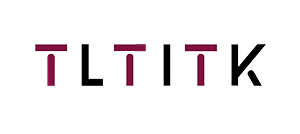Ошибка формата электронной почты
emailCannotEmpty
emailDoesExist
pwdLetterLimtTip
inconsistentPwd
pwdLetterLimtTip
inconsistentPwd

Новости
Здесь вы можете описать кусок текста, который хотите выразить

Customizing Device Configuration and Services for Specific Scenarios: Ensuring the Final Solution Meets Client Needs
In today’s rapidly evolving technological landscape, businesses face the challenge of selecting the right devices and services that align with their unique needs. A one-size-fits-all approach rarely works. To deliver the best possible solution, it's essential to understand client requirements and tailor the configuration accordingly. Here’s how to customize device configurations and services to ensure the final solution perfectly meets client needs.
1. Understand Client Requirements
The first step in any customization process is a thorough understanding of the client’s needs. This goes beyond simple hardware specifications. Engaging with the client through meetings or surveys will help identify:
- Business objectives: What are the client’s long-term goals? Are they aiming to scale operations or improve efficiency?
- Technical requirements: What are the specific performance, security, and software needs?
- Challenges: Identify any existing pain points, such as performance bottlenecks, data storage issues, or network problems.
By gathering all relevant information, you can form a detailed picture of what needs to be done.
2. Define the Right Configuration
Once the requirements are clear, the next step is to define the hardware and software configuration that meets these demands.
- Hardware Configuration: Choose devices that will best support the client's operational needs. This could include selecting servers with high processing power for data-heavy tasks or network equipment for seamless connectivity.
- Software & Platform Selection: Identify the best software tools, operating systems, databases, and applications to ensure a smooth integration with the client’s existing systems. Also, consider scalability and future-proofing to avoid potential upgrades soon after implementation.
3. Tailor Services to Specific Needs
It’s not just about the hardware and software but also about offering the right set of services that make the solution holistic and complete.
- System Integration: Seamlessly integrate the new devices and software into the client’s existing infrastructure. This reduces disruptions and ensures smooth operation from day one.
- Data Migration and Customization: Help clients transfer data from their old systems to the new ones while maintaining integrity. If needed, customize the solution with additional features tailored to their business model.
- Training & Support: Provide training to the client’s team to help them make the most of the new system. Additionally, offer ongoing support to troubleshoot issues and provide regular updates.
4. Cost-Effective Solutions
A key consideration when customizing a solution is staying within budget without compromising on performance.
- Cost Estimation: Break down the total cost, including hardware, software, implementation, and maintenance.
- Optimizing Resources: If the budget is tight, look for ways to streamline the configuration without sacrificing quality. You might choose alternative hardware, scale back on features, or phase the implementation.
5. Deployment and Testing
After finalizing the solution, it’s time to implement it. Deployment should be done in phases to ensure minimal disruption.
- Deployment Plan: Create a detailed schedule with milestones and deliverables.
- Testing: Before going live, thoroughly test the entire system to ensure it functions as expected. This helps uncover any issues early, preventing costly fixes down the road.
6. Feedback and Continuous Improvement
Once the solution is in place, the work doesn’t end there. Ongoing feedback from the client will help identify any areas for improvement.
- Post-Implementation Support: Offer a post-deployment check-in to gather feedback and address any challenges.
- System Updates & Optimization: Regularly review the system’s performance and suggest optimizations or upgrades as the client’s needs evolve.
Conclusion
Customizing device configurations and services for a specific scenario requires a deep understanding of the client's needs and a strategic approach to providing solutions. By focusing on thorough consultation, tailored hardware and software, and continuous support, you ensure that the final solution not only meets the client's expectations but also positions them for future growth and success. With the right approach, customization becomes a powerful tool for delivering long-term value to your clients.

